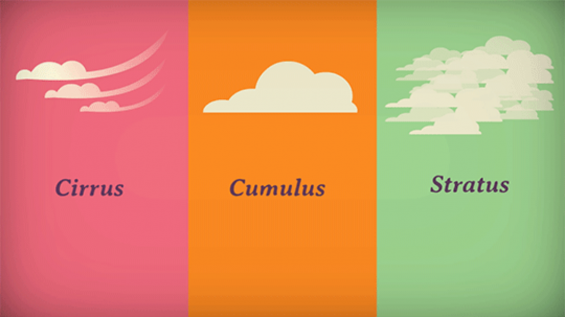
How to use TED-Ed in your Earth and Space Science classroom

Highland Park High School teacher Gordon Williamson uses TED-Ed Lessons extensively in his middle school Earth and Space Science classroom to catalyze conversations and supplement his curriculum. Below, a snapshot of Gordon’s favorite lessons and how he chooses to wrap them into his units.
Earth’s Dynamic Atmosphere
Introduction to Earth and Space System – The Earth as a System
How simple ideas lead to scientific discovery
This is a lesson I use with my Earth and Space Science class at the first of the school year to help engage the students and encourage them to ask the questions, which they may think are too silly to ask. We have great discussions around questions, which may seem simple, but actually are quite complex when examined in depth. I then use the illustration presented in the lesson of Eratosthenes who was the first person credited with accurately measuring the circumference of the Earth. We then go outside and, using the sun and a meter stick, duplicate his experiment achieving very accurate results.
A guide to the energy of the Earth
Understanding that the Earth as a system is one of the most important concepts that students of Earth and Space science need to understand. These systems are all connected through the flow of energy, which is illustrated well in this lesson. This lesson makes a nice introduction when first beginning a discussion of the Earth’s systems.
The Atmosphere: Composition, Structure, and Temperature
Climate change: Earth’s giant game of Tetris
How quantum mechanics explains global warming
There are few topics more relevant today than the concerns and the controversies surrounding global warming and climate change. Few people, however, have an understanding of the physics driving the greenhouse effect. Most people are aware that carbon dioxide and other gases are important contributors to climate change, but few have an understanding of the physics behind the processes involved. “How Quantum Mechanics Explains Global Warming” is a well-written lesson explaining simply and clearly how the quantum mechanics is responsible.
Moisture, Clouds, and Precipitation
Cloudy climate change: How clouds affect Earth’s temperature
Air Pressure and Wind
How heavy is air?
The history of the barometer
Weather Patterns and Severe Storms
How do tornadoes form?
What on Earth is spin?
The Solid Earth
Matter and Minerals
Radioactivity: Expect the unexpected
Plate Tectonics: A Scientific Revolution Unfolds
Earthquakes and the Earth’s Interior
Why do buildings fall in earthquakes?
How tsunamis work
Volcanoes and Other Igneous Activity
The colossal consequences of supervolcanoes
Few students have an understanding of how powerful and devastating a volcanic eruption can be. They often have misconceptions acquired from disaster movies and pop culture that tend to show death and destruction from molten rock racing down the side of a volcano. This lesson uses the eruption of Mount Tambora in Indonesia and other historic eruptions to illustrate the global destruction, which is caused primarily by chemical compounds dispersed in the air. The lesson emphasizes the global nature of a supervolcano eruption.
Earth’s Place in the Universe
Origins of Modern Astronomy
Tycho Brahe, the scandalous astronomer
A rare, spectacular total eclipse of the sun
Reasons for the seasons
The moon illusion
What causes the phases of the moon?
What in the world is a lunar eclipse tetrad?
Enrichment Unit: Celestial Navigation
How does math guide our ships at sea?
Touring Our Solar System
Could comets be the source of life on Earth?
The design of the universe
Could a Saturn moon harbor life?
Light, Astronomical Observations, and the Sun
Is light a particle or a wave?
What light can teach us about the universe
Light waves, visible and invisible
Sunlight is way older than you think
What is an aurora?
Beyond Our Solar System
Is there a center of the universe?
What is the universe made of?
Light seconds, light years, light centuries: How to measure extreme distances
How do we study the stars?
“How do we study stars?” explores the properties of electromagnetic radiation from radio waves through visible light to gamma radiation. I find this lesson is an excellent introduction to the study of light in my Earth and Space class. The lesson examines the unique properties of light and how astronomers use spectroscopy to understand the properties of stars and galaxies including their composition, temperature, age, distance, and mass. This lesson leads naturally into a more in-depth discussion of spectroscopy.
How I fell in love with quasars, blazars and our incredible universe
Shedding light on dark matter
The beginning of the universe for beginners
Dark matter: The matter we can’t see
Dark matter: How does it explain a star’s speed?
What we can learn from galaxies far, far away
The Global Ocean
The Restless Ocean
How big is the ocean?
Deep ocean mysteries and wonders
Making waves: The power of concentration gradients
Check out Gordon’s guide for using TED-Ed in the chemistry classroom here. >>



